How to search on a Mac
We tend to think of "search" as a web-only initiative, but your Mac can do searches, too! Both Spotlight and the Finder are excellent resources, and learning how to use search within these macOS features can help you find what you're looking for much faster.
Here, I'll show you how to search on Mac, how to use Spotlight to search your computer, and some great apps you might prefer to Apple's built-in services.
What is Spotlight in macOS?
Spotlight on macOS is a system-wide search tool you can use to find files, photos, emails, documents, your calendar, and the web. Let's take a look at how you can use Spotlight.
The main features of Spotlight search on Mac are:
- Instant search. It will help you find documents, images, information about people in your contact list, etc.
- Launching apps. All you need is to type in the name of the app and hit Enter.
- Web searching. Spotlight offers to search the internet directly from the search bar.
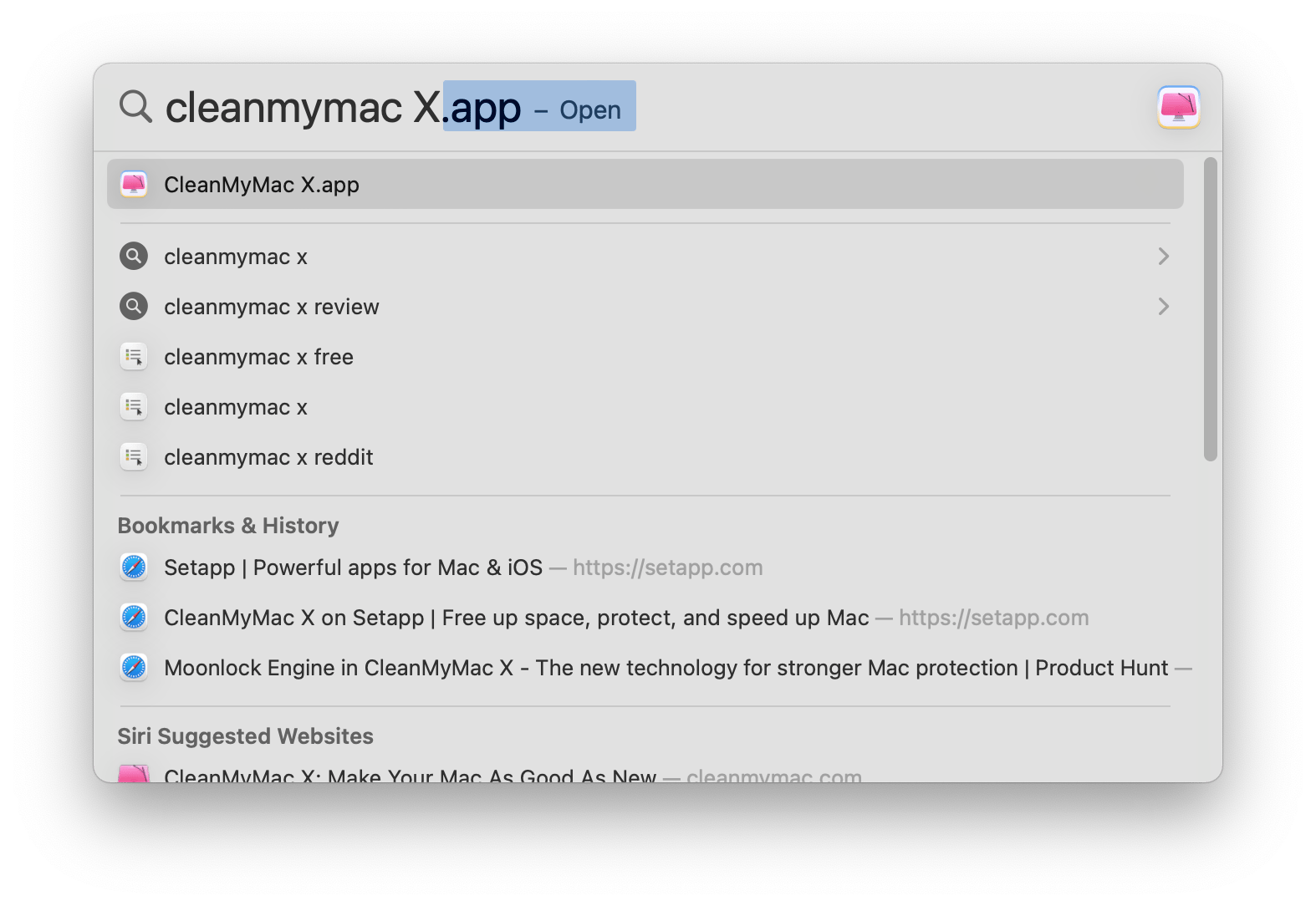
On top of that, Spotlight helps with word definitions, a weather forecast, currency conversion, and a calculator. We'll talk about these options in more detail later.

How to search on Mac using Spotlight
There are at least three ways to activate Spotlight:
- Look for the magnifying glass icon in the top right corner of your computer's menu bar. Click on it, and a search bar will appear. Type in your query. (If it's not there, go to System Settings > Control Center. At the bottom, there is a "Spotlight" line. Make sure the box next to it says "Show in Menu Bar".)
- Press the Command + spacebar combination on the keyboard.
- Press the function key with the image of a magnifying glass if available (I have it on F4).
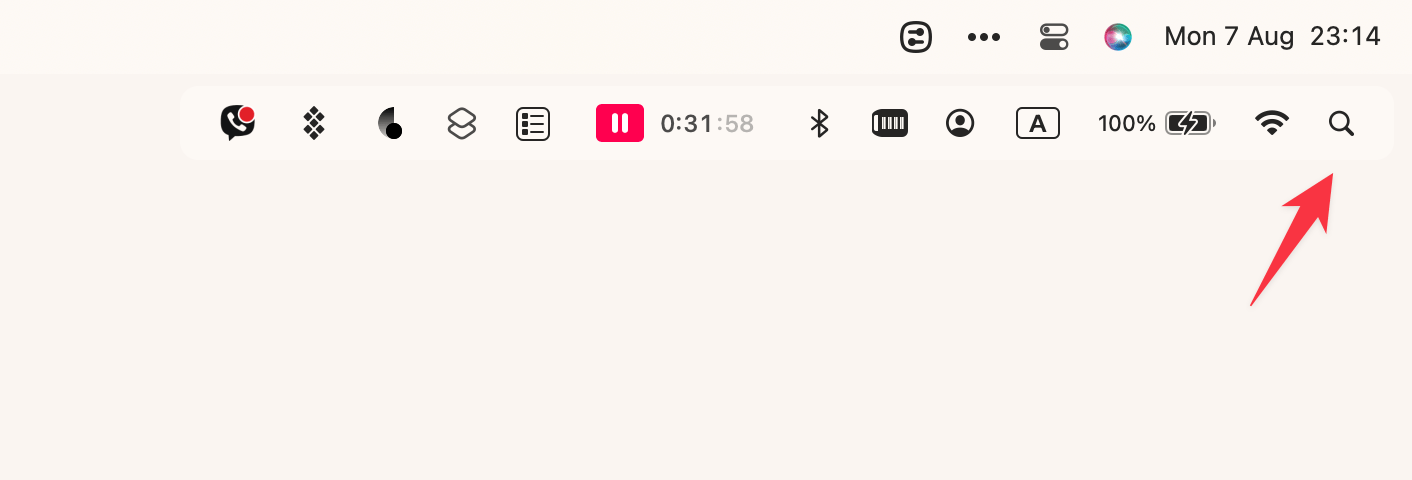
How to Spotlight search for information on Mac?
- First, you enter a query in the search bar to find a document or other object.
- As you type, Spotlight immediately starts to give out potential options, which change depending on your further refinements. On the proposed list, you will see files, apps, contacts, and other considerable items that match the query.
- If you get too many results, narrow down your search and enter more refinements.
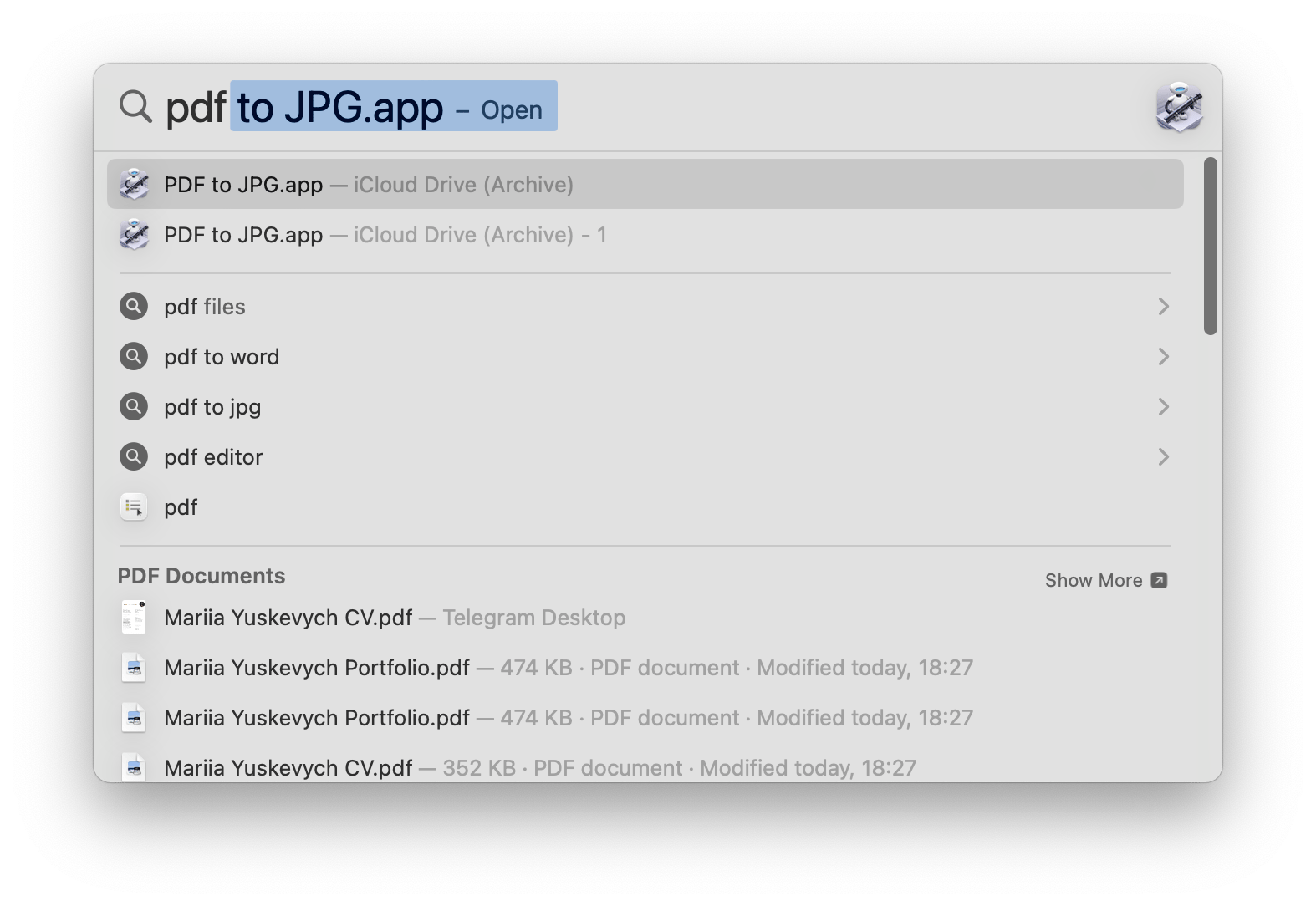
In the example above, I show you how to search for a document on a Mac. Now, let's look at what you can do with search results:
- View in Spotlight
- Browse them on the internet using Safari
- Open the element
- Display the object's location on the computer
- Copy an item by dragging it to a Finder window or desktop
- View all search results in Finder
When you're done with Spotlight, close the tool to return to the regular screen. To do this, click outside the search bar or press the Esc key on the keyboard.
How to customize Spotlight search
Spotlight settings aren't set in stone, and many of them are easy to change. Here are a few ideas.
Show only selected categories in search results
Why do that? Mostly for convenience. For example, I know some people are annoyed by the web search results in Spotlight or Macbook Tips when they are just looking for a document.
Go to System Settings > Siri & Spotlight. Scroll down and uncheck the categories you don't want to search in.
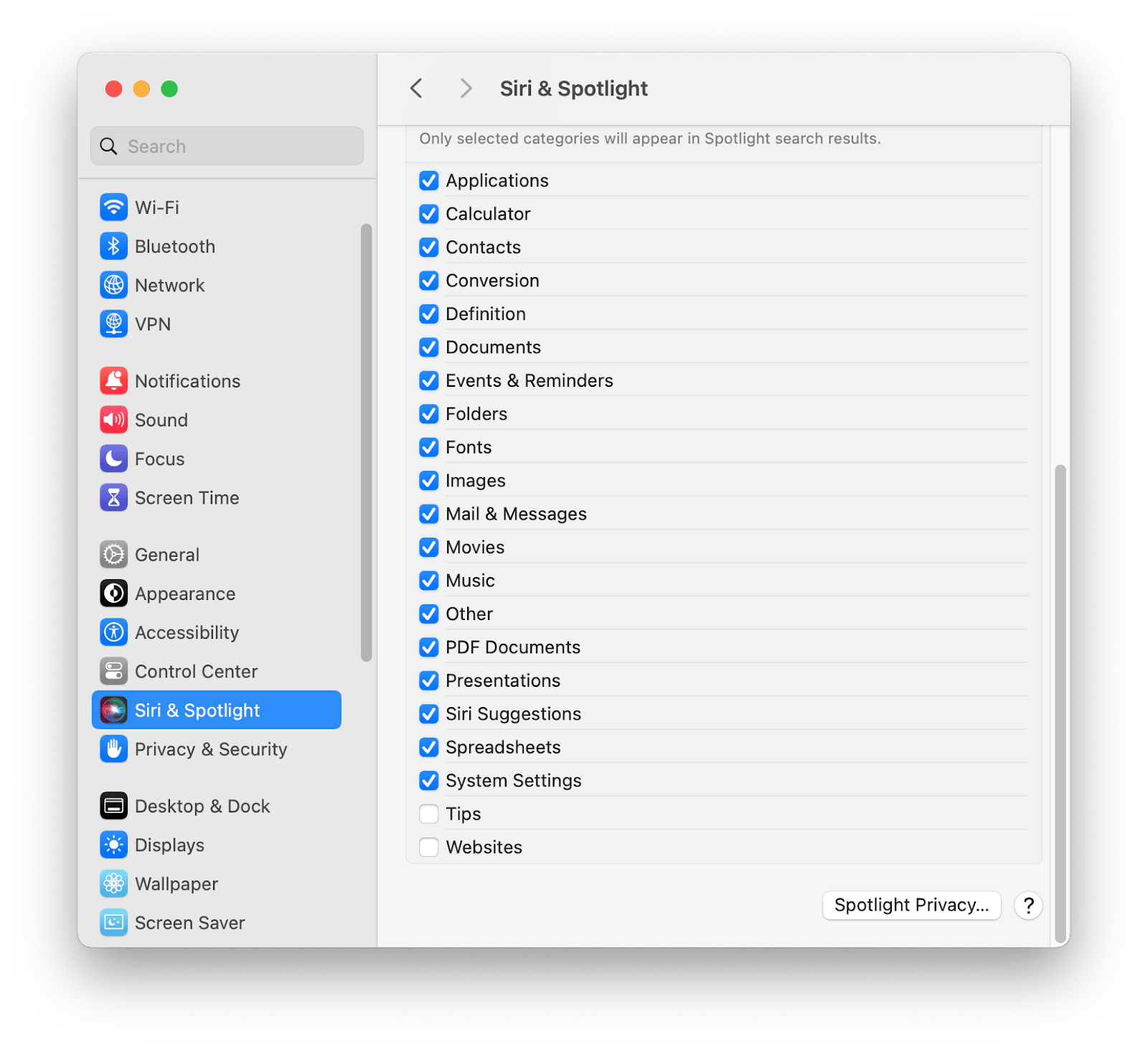
Exclude some locations from your search
Go to System Settings > Siri & Spotlight > Spotlight Privacy... In the window that appears, press + and select the location you want to hide.
I'd say this is especially important for those who have a shared Mac or keep private files on their laptop that they don't want Spotlight to display. But personally, I simply excluded my company's Google Drive, which stores photos from company events, because they often showed up in the results even when I was searching for other images.
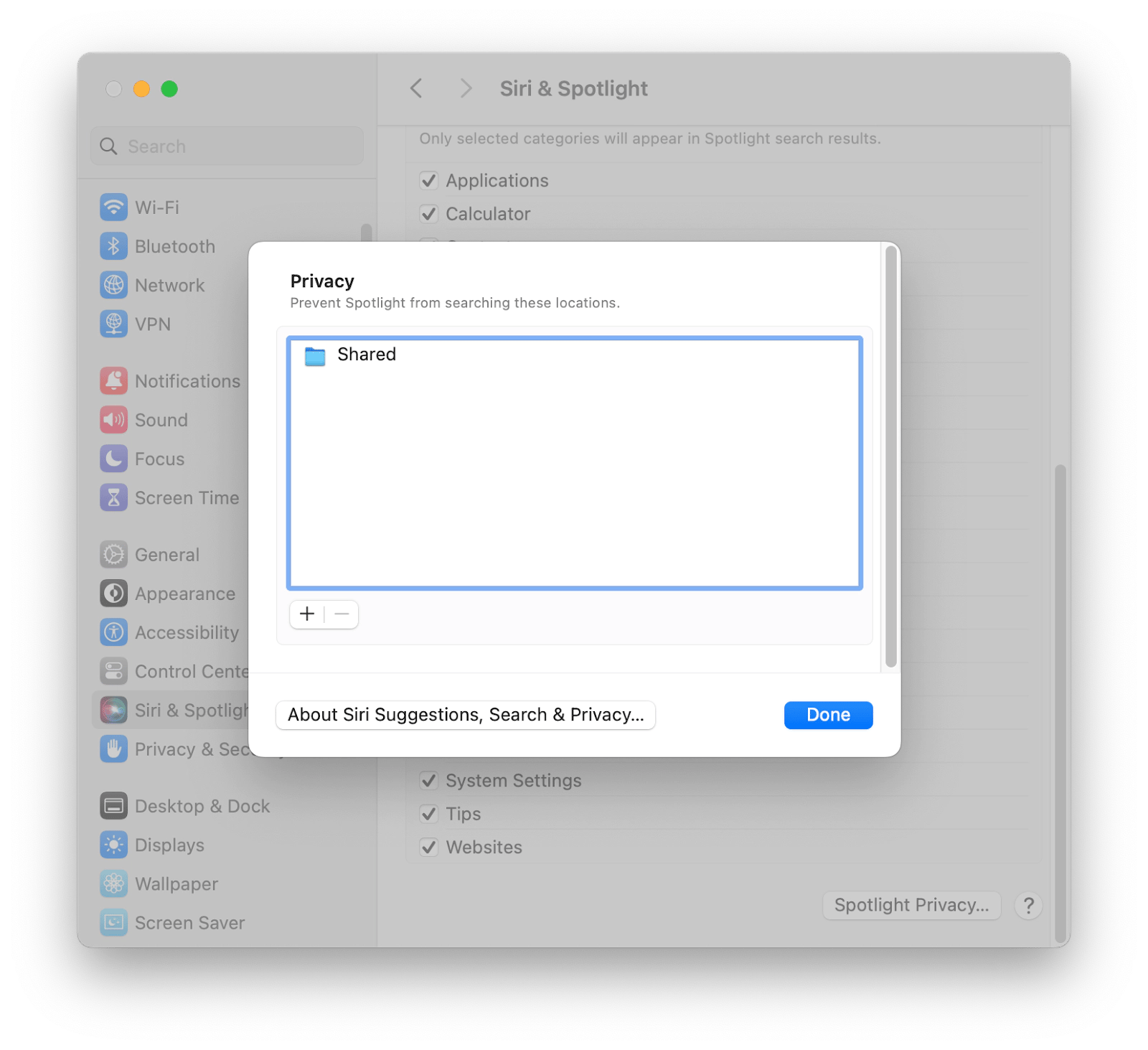
Change the shortcut for opening Spotlight
Instead of the default Command + Space, set your own shortcut.
- Go to System Settings > Keyboard > Keyboard shortcuts...
- In the right pane, select Spotlight.
- In the Show Spotlight search line, double-click the shortcut and enter a new one.
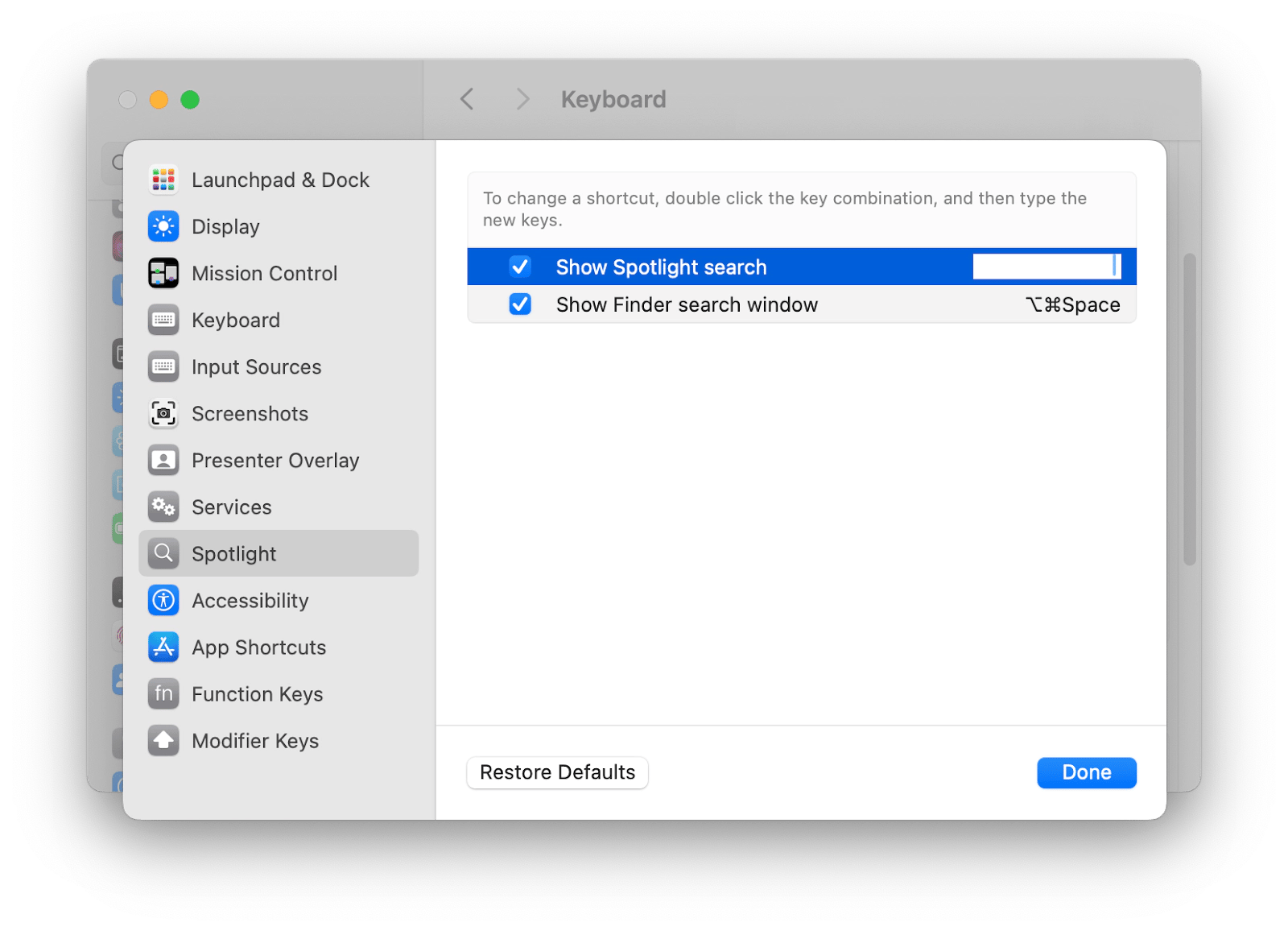
What more can you do with Spotlight?
As we discussed above, Spotlight is not only a file search tool. In addition to the features I've mentioned, I want you to know about even more helpful Spotlight functionalities that you can use in your daily life.
- Access to system settings. Enter their names in the search bar and immediately proceed to change the requested parameters. For example, when you type "Display," you will get a window with display settings that will allow you to adjust the characteristics of the screen.
- Contact search. Spotlight can search for contacts in the address book or the Contacts app. All you have to do is enter the person's name to have Spotlight display their contact information, including phone numbers and email addresses.
- Search events in the calendar. Spotlight will find corresponding entries in the calendar by the event name or the related keywords.
- Search emails. If you use the Mail app, you can search for emails by sender names, subject lines, or email content.
- Converting time zones. Spotlight will help you get the current time in a given location or the time difference between time zones.
- Lookup for dictionary definitions. Do you want to know the meaning of a specific word? Type it into Spotlight, and the tool will display its values.
- Working with the app menu. Spotlight can not only launch apps but also display relevant items from their menus. For example, when typing "undo" in Spotlight, the tool might offer the "Undo" function from the previously launched app.
- File search by metadata. You can search for files based on their creation date, type, or tags.
- File preview. If you hover over a file in the Spotlight results, you'll see a preview that lets you see its contents but doesn't fully open it.
- Math functions. Spotlight can be used as a simple calculator and a tool for more advanced math functions (such as finding cosine or taking square roots).
- Words translated into different languages.
How to search with Finder
Finder, like Spotlight, is a simple way to find items but is also a bit more direct for discovering files and folders. The tool also lets you organize folders and files according to your preferences. You can open the Finder by clicking on the Finder icon in your Mac's Dock.

Here's how to search with Finder:
- Open Finder by clicking the smiling blue face icon in the Dock.
- In the Finder window, you will see a search bar with a magnifying glass icon in the top right corner. Click on the search bar and activate it.
- Enter a search term and press Enter.
- If you want to specify search criteria, click the Add button (+) on the right side of the search window, below the search box.
- Then click the far left pop-up menu, and then select or add search criteria.
- For example, to search for a specific type of item instead of all items, choose Kind. Or, to search for all items whose name contains a specific word or phrase, choose Name.
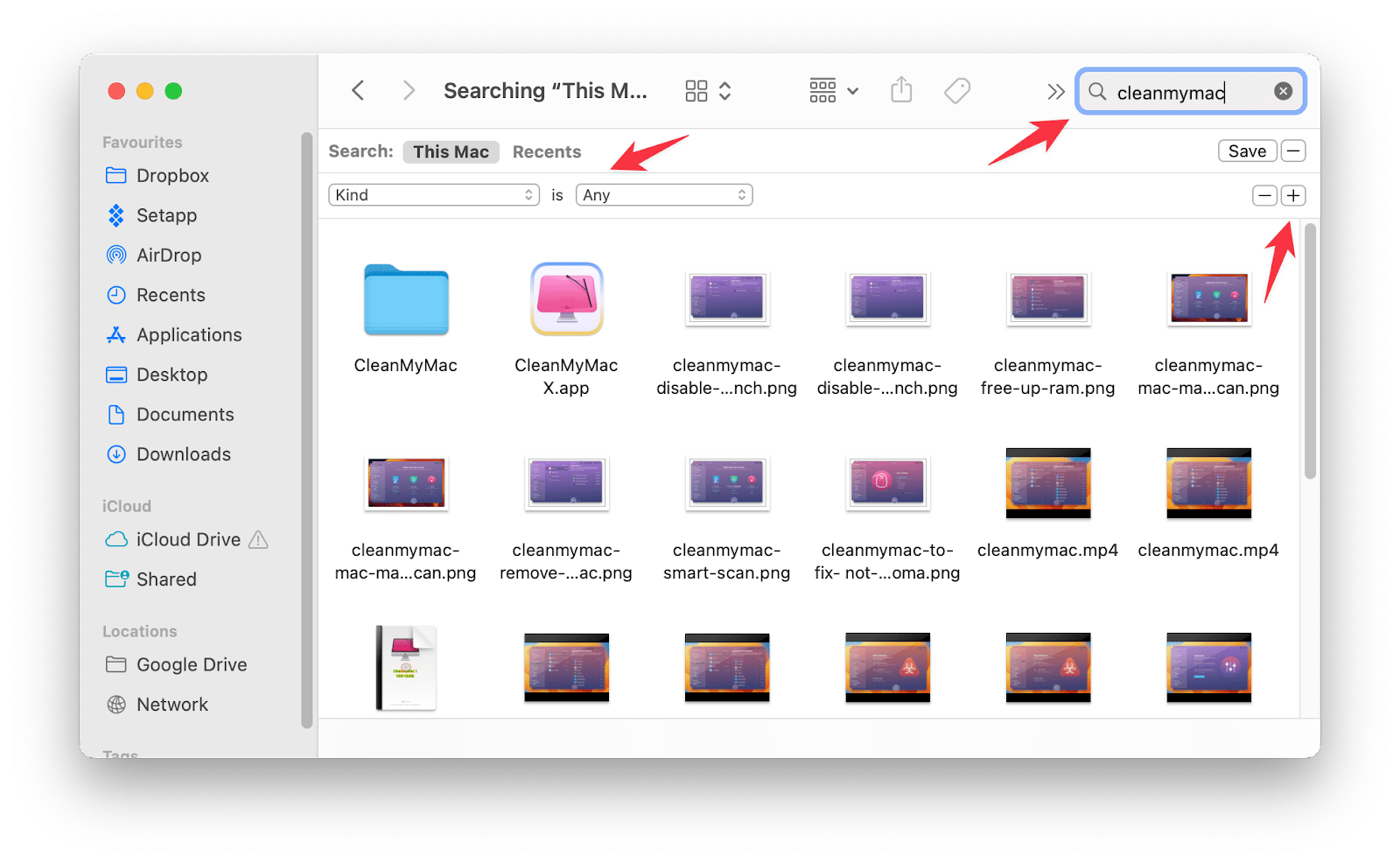
How to search messages on Mac
Have you ever thought about a message you sent and wondered "How to search messages on Mac?" It's a fairly common question; we may have shared info about an event with someone or need to bring up details about a conversation. If you're a dedicated iMessages user, you'll want to know how to search the Messages app on your Mac. Here's how to do it:
- Open the Messages app from the Dock
- On the left side, above all conversations, enter your search term
- Press enter.
This will search through your iMessage conversations for the term you enter. Any active conversation with the search term will be highlighted, and you'll be able to click on those conversations to see highlighted text. Keep in mind searching through the Messages app limits your search to iMessage conversations.
TipIf you have a lot of messengers in your life, I advise you to put them in one place and save your time. Install IM+ and use it as a messenger box – a single app that includes all of your favorite channels of communication. |
How to search for a word on Mac
Searching for words on your Mac is the same process as searching for anything else. You can open Spotlight, search in Finder, or use Lacona to search your Mac.
If you want to know how to find a word on Mac fast, here you go. The most direct shortcut is Command + F, which opens Finder and searches your entire Mac for a word you enter. It's great for those times you know the name of a document but aren't sure where it's located.
How to search in PDF documents
The built-in PDF search does not offer many options. The default method is to search by word. Open the PDF, press Command + F, and type a word to search for.
The program will highlight the found word in the file. But you should understand that this is not a smart search: only exact matches will be displayed, and only if the document has been OCRed (i.e. if the text is text, not an image).
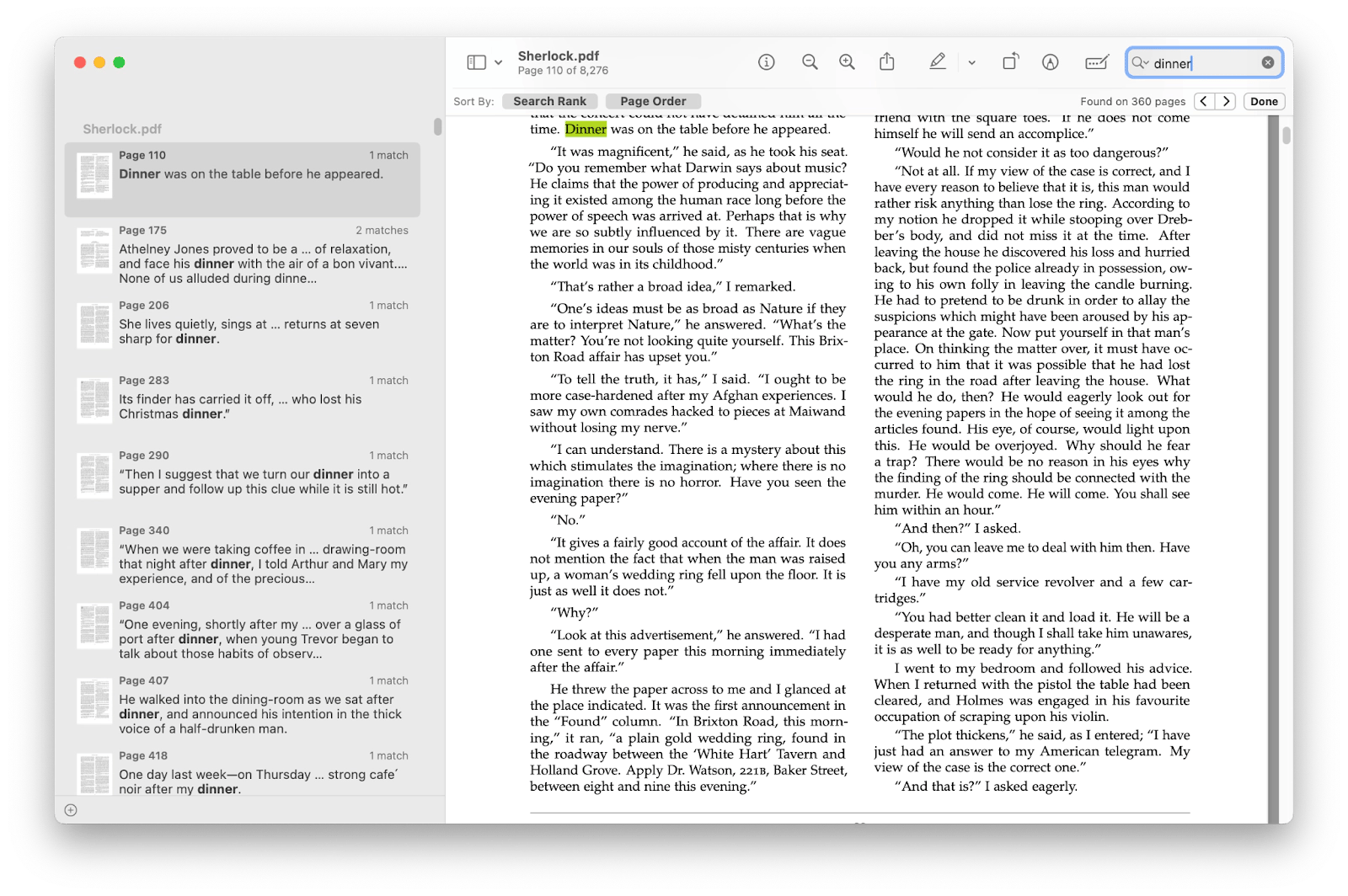
For more advanced options, you'll have to look for third-party tools. One of the popular ones I can recommend is PDF Search. It searches across multiple PDFs, checking for related terms, various combinations of terms, and usually ignoring typos.
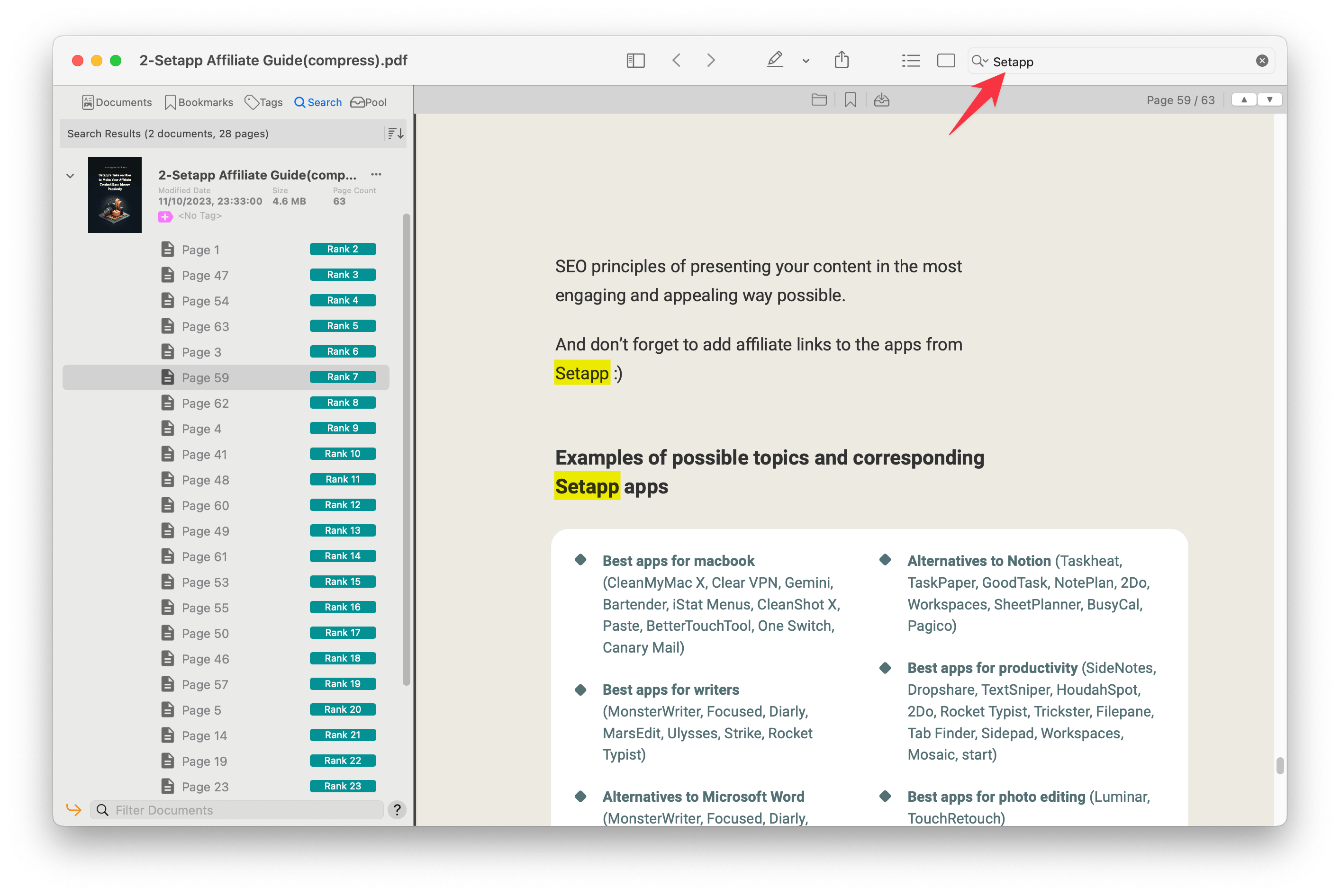
Other tools allow you to search a scanned PDF, or chat with the PDF to get a concise, meaningful answer instead of just a highlighted word. Read our article on searching a PDF if this is your topic.
How to search in images
The Mac's photo search is pretty good when it comes to images stored in the Photos app. For example, I typed the word "books" into the search, and the app returned related images. The results included some third-party screenshots and videos, but it's still a good result, considering it's a smart search and the image title doesn't contain the word "book."
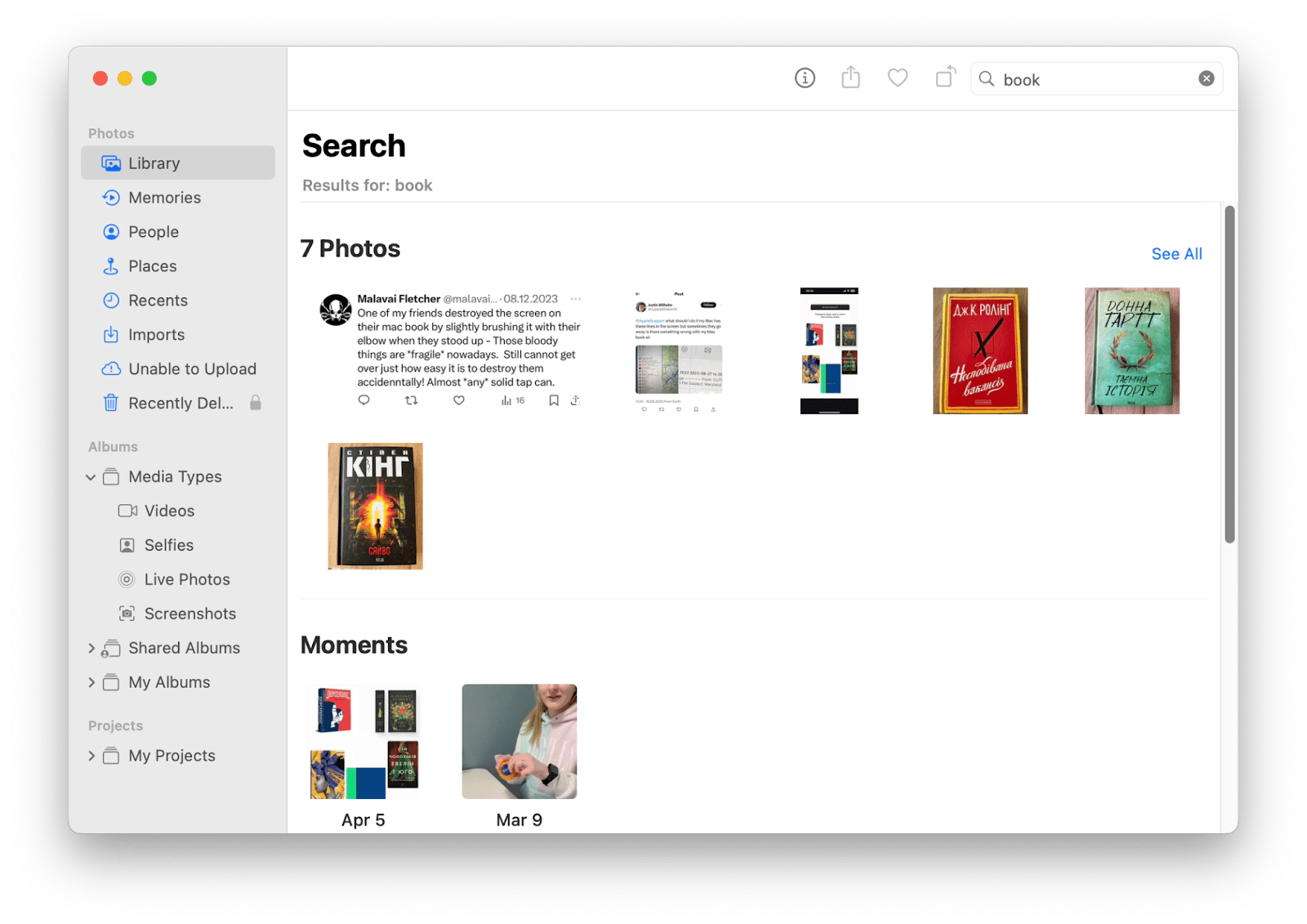
Searching for other images and screenshots is more complicated. You can search for them by name in Spotlight, but it's not easy considering the name is typically "Image_23859898q001.heic".
In this case I recommend Keep It Shot. Its job is to give images, screenshots, and videos meaningful names. You just select the files you want to rename and the app does it for you. Instead of "Screenshot 2024-07-11 at 14.59.58.png", you get "Google Doc Interface" – that is, what is actually depicted in the image. This is invaluable for writers, designers, photographers, SEOs – anyone who works with images and screenshots.
And it makes searching a pleasure. Keep It Shot searches by keywords, related words, word fragments, and more – all offline and private. See, there is even an "Image description" line that includes dozens of related words.
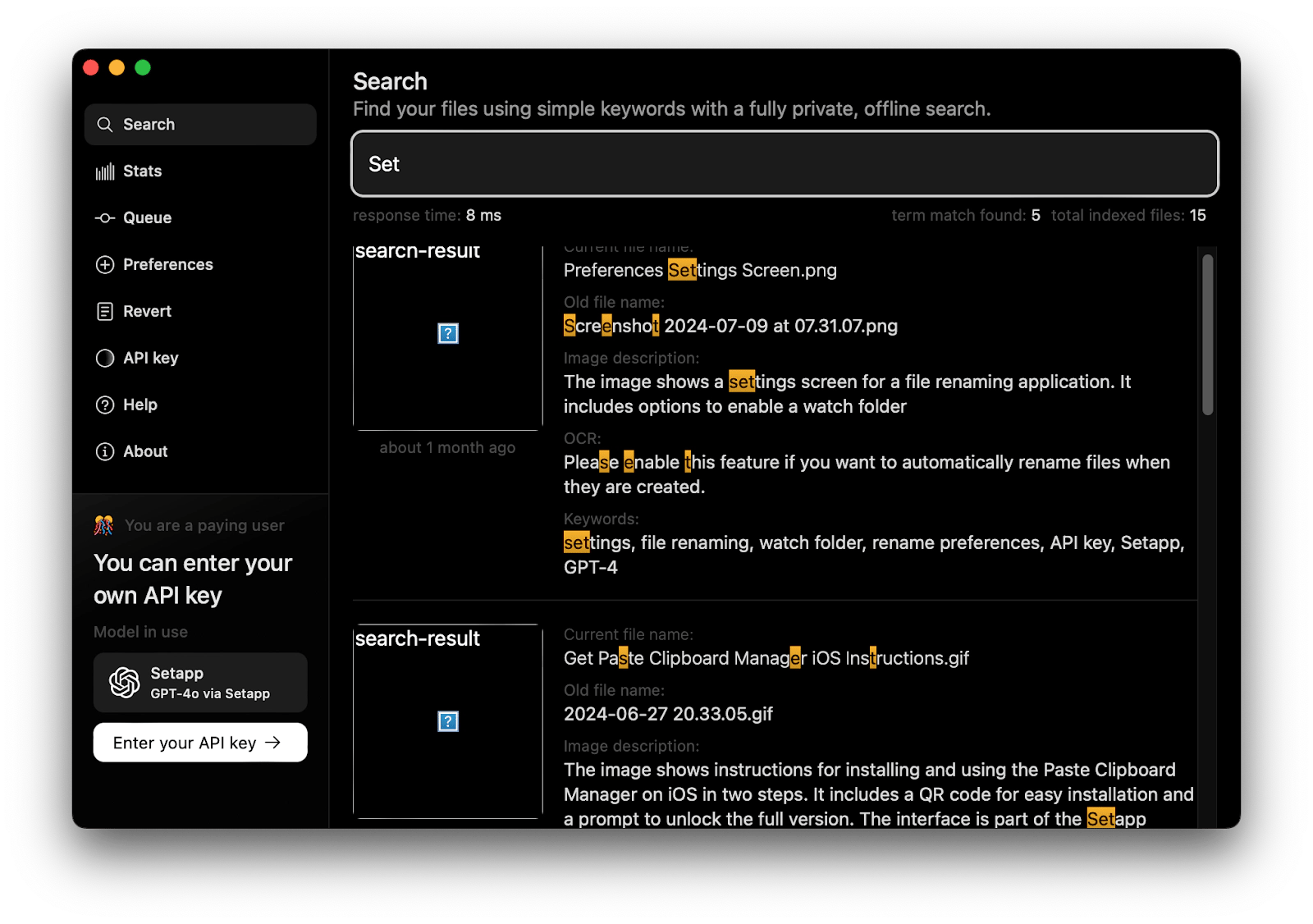
Master search on your Mac
Finding files on your Mac has never been simpler. Like so many Apple features, Spotlight and Finder search are great but could be a lot better. That's why for advanced search I use additional apps.
- For natural-language search and commands – Lacona.
- To search in PDFs – PDF Search.
- To search in screenshots and images – Keep It Shot.
These tools and others I mentioned above (IM+) are free as part of a seven-day trial of Setapp, a platform with dozens of apps for your Mac, iPhone, and iPad.
When your free trial is over, Setapp is only $9.99 + tax per month for continuous access to its incredible suite of apps.





